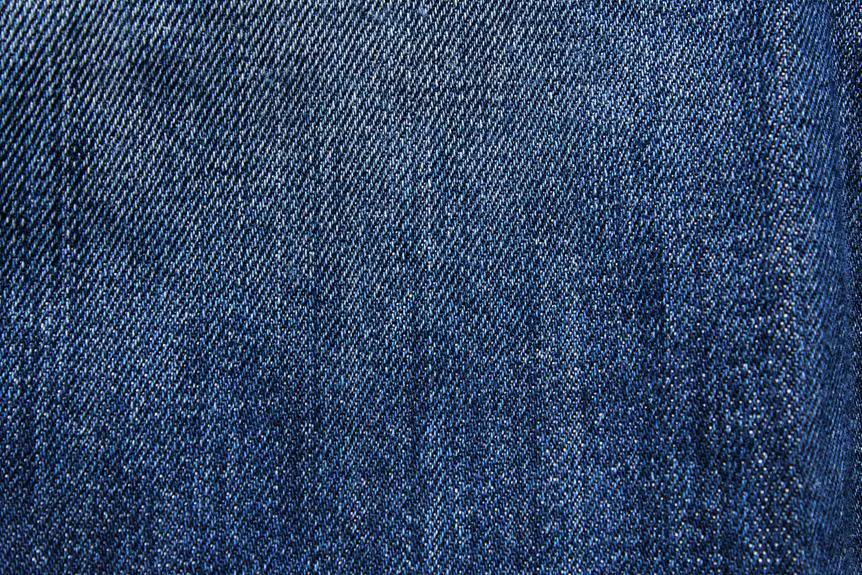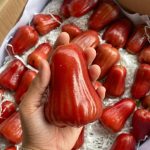As you consider the future of hemp fabric, you'll notice a notable shift in consumer preferences towards sustainable textiles. With innovations in production and collaborations in high fashion, hemp's profile is rising. Its environmental benefits make it a compelling choice, but there are also challenges the industry faces that could impact its trajectory. What does this mean for its role in sustainable fashion? Understanding these dynamics could reshape your perspective on hemp's potential in the textile market.
Table of Contents
Key Takeaways
- Growing consumer demand for sustainable textiles drives the shift towards hemp fabric due to its durability and eco-friendliness.
- Innovations in production methods enhance hemp fabric quality while reducing environmental impact, making it more appealing to consumers.
- Luxury fashion brands increasingly incorporate hemp into their collections, showcasing its versatility and sustainable luxury appeal.
- The global hemp market is projected to exceed $26 billion by 2025, indicating significant growth and investment in the industry.
Growing Demand for Sustainable Textiles
Consumers are increasingly seeking sustainable textiles, driving a shift towards eco-friendly options like hemp fabric. You're likely aware of the growing awareness surrounding environmental issues, and this trend is reshaping the textile industry. Shoppers now prioritize materials that minimize environmental impact, and hemp stands out as a top choice.
Hemp fabric isn't just sustainable; it's durable, biodegradable, and requires less water and pesticides compared to conventional cotton. When you choose hemp, you're supporting a crop that revitalizes the soil and contributes to a healthier ecosystem. As more brands recognize this demand, you'll find an expanding range of hemp-based products in stores, from clothing to home textiles.
You might also appreciate the stylish designs emerging in the market. Hemp's versatility allows it to be blended with other fibers, creating fabrics that feel good and look great. This combination of sustainability and aesthetics appeals to consumers like you who want to make responsible choices without sacrificing quality or style.
As you explore your options, remember that your purchasing decisions can contribute to a more sustainable future. Embracing hemp fabric isn't just a trend; it's a statement about your values.
Innovations in Hemp Fabric Production
Innovations in hemp fabric production are transforming how this versatile material is made, making it even more appealing for eco-conscious shoppers like you. Recent advancements focus on eco-friendly processing methods, reducing the environmental impact of production. For instance, companies are increasingly using water-efficient techniques, minimizing waste while ensuring high-quality fabrics.
You'll also find that innovations in machinery are streamlining the production process. Modern equipment can extract fibers more efficiently, resulting in softer, stronger textiles. This means you get to enjoy the durability of hemp without compromising on comfort.
Additionally, some manufacturers are experimenting with blends, combining hemp with other sustainable fibers like organic cotton or Tencel. This not only enhances the fabric's properties but also broadens your choices in style and texture.
Moreover, research is ongoing into new treatments and finishes for hemp fabrics, making them more resistant to wear and tear. These developments ensure that hemp textiles remain a practical choice for your everyday wardrobe.
As these innovations continue to unfold, you can expect even more exciting options in hemp fabrics that align with your values and lifestyle.
Hemp in High Fashion
When you think of high fashion, hemp mightn't be the first material that comes to mind, but it's making waves with its sustainable luxury appeal.
Designers are embracing innovative collaborations, creating stunning pieces that prioritize both style and eco-friendliness.
Get ready to see how hemp is transforming the fashion landscape and redefining what luxury looks like.
Sustainable Luxury Appeal
Hemp is redefining high fashion by combining eco-friendliness with luxurious textures and styles. As you explore sustainable luxury, you'll notice how designers are embracing hemp for its versatility and elegant drape. This fabric not only feels good against the skin but also makes a bold statement about your values.
When you wear hemp, you're choosing a material that's biodegradable and requires less water than conventional fabrics. This eco-conscious choice enhances your wardrobe with a touch of sophistication, allowing you to enjoy high-quality garments while supporting sustainable practices.
Hemp's natural resistance to mold and UV rays means it's not only stylish but practical too. You can find hemp blended with silk or organic cotton, creating stunning pieces that catch the eye and feel incredible.
As more luxury brands recognize the appeal of hemp, you can expect to see it featured in everything from tailored suits to chic evening wear. This shift towards sustainable luxury is more than a trend; it's a movement that invites you to be part of a growing community that values both style and sustainability.
Embrace the future of fashion by incorporating hemp into your wardrobe today.
Innovative Design Collaborations
As luxury brands embrace sustainable materials like hemp, exciting design collaborations are emerging that elevate this eco-friendly fabric to new heights in high fashion. You'll see renowned designers teaming up with sustainable fashion labels, creating stunning pieces that not only look good but also champion environmental responsibility. These collaborations are redefining luxury, making hemp a desirable choice for the conscious consumer.
Here's a glimpse of some innovative partnerships that are making waves in the fashion world:
| Designer | Collaboration Partner | Collection Highlights |
|---|---|---|
| Stella McCartney | Hemp Collective | Eco-chic dresses and accessories |
| Ralph Lauren | GreenFiber | Tailored suits with natural dyes |
| Vivienne Westwood | Earth Couture | Avant-garde pieces with bold prints |
| Gucci | Hemp Future | Statement bags and footwear |
These collaborations showcase the versatility of hemp, proving that sustainability doesn't mean sacrificing style. By choosing hemp, you're not just making a fashion statement; you're participating in a movement that values ethical production and environmental stewardship. The future of fashion is here, and it's woven with hemp.
Environmental Benefits of Hemp
When you choose hemp fabric, you're opting for a material that thrives on sustainable growth practices, making it a smart choice for the environment.
It also helps reduce your carbon footprint while offering biodegradable and compostable options.
Let's explore how these benefits make hemp a standout in eco-friendly fashion.
Sustainable Growth Practices
Utilizing sustainable growth practices, hemp significantly reduces environmental impact while promoting soil health and biodiversity. By incorporating crop rotation, organic fertilizers, and minimal pesticide use, you can cultivate hemp in a way that benefits the ecosystem. This method not only enhances soil fertility but also encourages the presence of beneficial insects and microorganisms.
Here's a visual representation of the sustainable growth practices associated with hemp:
| Practice | Benefits | Impact on Environment |
|---|---|---|
| Crop Rotation | Improves soil structure | Reduces soil erosion |
| Organic Fertilizers | Enhances nutrient content | Minimizes chemical runoff |
| Minimal Pesticides | Protects beneficial species | Reduces toxicity in soil |
| Cover Cropping | Prevents weed growth | Increases biodiversity |
| Water Conservation | Reduces water usage | Protects local water sources |
Reduced Carbon Footprint
Hemp plays a crucial role in reducing carbon footprints by absorbing significant amounts of carbon dioxide during its growth cycle. This natural process not only helps combat climate change but also offers you an eco-friendly fabric option.
When you choose hemp fabric, you're supporting a sustainable material that benefits the planet in several ways:
- Fast Growth: Hemp grows quickly, reaching maturity in just 3-4 months, allowing for rapid carbon absorption.
- Soil Health: Its deep roots improve soil structure and prevent erosion, promoting healthier ecosystems.
- Reduced Pesticides: Hemp is naturally resistant to pests, which means fewer harmful chemicals are used during cultivation.
- Lower Water Usage: Compared to cotton, hemp requires significantly less water, making it a more sustainable choice.
Biodegradable and Compostable Options
Choosing hemp fabric not only supports sustainable fashion but also ensures you're opting for biodegradable and compostable materials that return to the earth without harming the environment.
Unlike conventional fabrics, which can take decades to decompose, hemp breaks down naturally, enriching the soil as it does. This quality makes it an ideal choice for eco-conscious consumers like you.
When you choose hemp, you're not just selecting a product; you're investing in a future where textiles won't contribute to landfill overflow. Hemp fibers, rich in nutrients, promote healthy soil when composted, making them an excellent addition to your garden or local composting facility.
Moreover, hemp cultivation requires fewer pesticides and herbicides than cotton, reducing harmful chemicals in the ecosystem. This means that by wearing hemp, you're helping minimize environmental pollution and promoting a healthier planet.
As awareness of environmental issues grows, more brands are recognizing the importance of biodegradable and compostable fabrics. By supporting these initiatives, you're encouraging the industry to shift towards sustainable practices and reduce its ecological footprint, ensuring a cleaner, greener future for generations to come.
Challenges Facing the Hemp Industry
The hemp industry faces significant hurdles, including regulatory complexities and market competition, that can hinder its growth and acceptance. You might find that navigating these challenges is crucial for the industry's future.
Here are some of the main obstacles:
- Regulatory Issues: Different countries have varying laws regarding hemp cultivation and processing, which can complicate international trade and investment.
- Market Competition: Established fabric materials like cotton and synthetic fibers dominate the market, making it tough for hemp to gain a significant foothold.
- Consumer Awareness: Many consumers remain unaware of hemp's benefits, such as its sustainability and durability, which can limit demand.
- Production Costs: The costs associated with cultivating and processing hemp can be higher than those for traditional fibers, making it less attractive to manufacturers.
Addressing these challenges is essential if the hemp industry is to thrive. You'll need to stay informed and advocate for better regulations, increased awareness, and support for sustainable practices to help this promising industry flourish.
Future Market Predictions for Hemp
As sustainability becomes a priority for consumers and manufacturers alike, the hemp market is poised for significant growth in the coming years. You'll notice an increasing demand for hemp fabric, driven by eco-conscious choices and innovations in textile technology. By 2025, experts predict the global hemp market could surpass $26 billion, with a substantial portion attributed to fabric production.
Here's a quick overview of projected market trends:
| Year | Market Value (in Billion USD) | Growth Rate (%) |
|---|---|---|
| 2023 | 10.6 | 13 |
| 2024 | 15.2 | 14 |
| 2025 | 26.0 | 17 |
| 2026 | 30.5 | 12 |
| 2027 | 35.0 | 10 |
You can expect increased investment in hemp farming, as well as advancements in processing techniques. As fashion brands embrace sustainable materials, hemp fabric will likely become a staple in eco-friendly collections. By staying informed and adaptable, you can position yourself to benefit from this evolving market landscape.
Frequently Asked Questions
How Does Hemp Fabric Compare to Cotton in Durability?
Hemp fabric's durability surpasses cotton's, as it's naturally stronger and more resistant to wear and tear. When you choose hemp, you get a long-lasting material that's less likely to fray or fade over time.
Can Hemp Fabric Be Dyed Like Traditional Textiles?
Yes, you can dye hemp fabric just like traditional textiles. It absorbs dyes well, allowing for vibrant colors. However, you might need specific dyes to achieve the best results, as hemp's natural fibers behave differently.
Is Hemp Fabric Suitable for Sensitive Skin?
Yes, hemp fabric's breathable, hypoallergenic properties make it suitable for sensitive skin. It won't irritate, and its natural fibers promote comfort. You'll find it a great option if you're looking for skin-friendly textiles.
What Are the Common Uses of Hemp Fabric in Home Decor?
You can use hemp fabric in home decor for curtains, upholstery, and cushions. Its durability and natural texture add a rustic charm to your space, while being eco-friendly and hypoallergenic, perfect for various design styles.
How Does the Price of Hemp Fabric Compare to Synthetic Options?
When you compare hemp fabric prices to synthetic options, you'll find hemp's often higher initially. However, its durability and eco-friendliness can offer long-term savings and benefits, making it a worthwhile investment for sustainable choices.
- Identifying Nonwoven Fabrics: A Simple How-To Guide - July 12, 2025
- The Top Uses for Nonwoven Fabrics You See Every Day - July 12, 2025
- Nonwoven Interfacing 101: A Guide for Every Sewer - July 12, 2025




